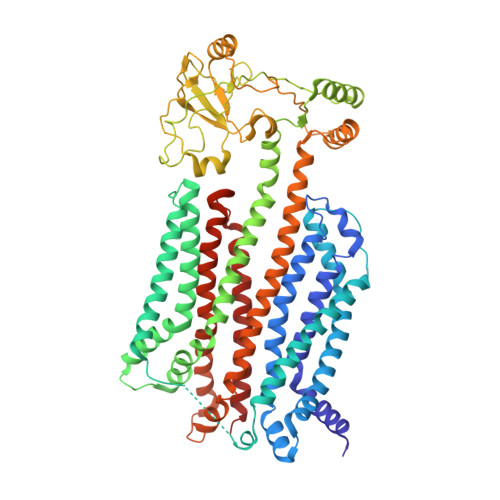Architecture of a complete Bce-type antimicrobial peptide resistance module.
George, N.L., Orlando, B.J.(2023) Nat Commun 14: 3896-3896
- PubMed: 37393310
- DOI: https://doi.org/10.1038/s41467-023-39678-w
- Primary Citation of Related Structures:
8G3A, 8G3B, 8G3F, 8G3L, 8G4C, 8G4D - PubMed Abstract:
Gram-positive bacteria synthesize and secrete antimicrobial peptides that target the essential process of peptidoglycan synthesis. These antimicrobial peptides not only regulate the dynamics of microbial communities but are also of clinical importance as exemplified by peptides such as bacitracin, vancomycin, and daptomycin. Many gram-positive species have evolved specialized antimicrobial peptide sensing and resistance machinery known as Bce modules. These modules are membrane protein complexes formed by an unusual Bce-type ABC transporter interacting with a two-component system sensor histidine kinase. In this work, we provide the first structural insight into how the membrane protein components of these modules assemble into a functional complex. A cryo-EM structure of an entire Bce module revealed an unexpected mechanism of complex assembly, and extensive structural flexibility in the sensor histidine kinase. Structures of the complex in the presence of a non-hydrolysable ATP analog reveal how nucleotide binding primes the complex for subsequent activation. Accompanying biochemical data demonstrate how the individual membrane protein components of the complex exert functional control over one another to create a tightly regulated enzymatic system.
- Dept. of Biochemistry and Molecular Biology, Michigan State University, East Lansing, MI, USA.
Organizational Affiliation:




















